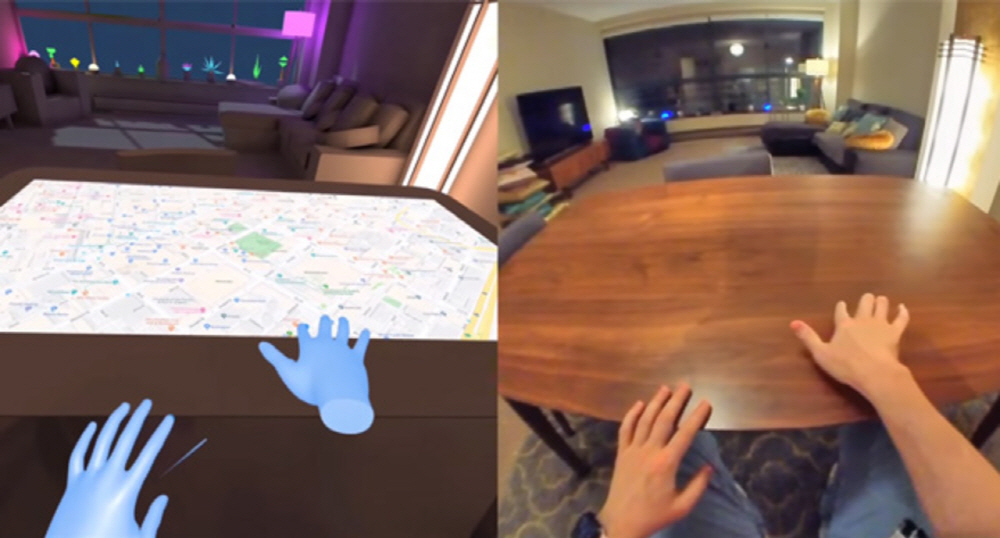
A programmer and UX designer used Unity and Oculus Quest with hand tracking to create a home VR spatialization that turned a table or wall into a giant touch screen in a day.
Through Oculus Quest, the interior looks a little dark, and shortcut icons such as Firefox, Google Map, Slack, and Google Drive are displayed on the table. When you tap the icon, the table turns into a huge map, and the sheet music is displayed on the wall in scroll form even in front of the electronic piano. Pictures are displayed in a virtual space next to the TV, and icons are lined up on the sofa next to it. Firefox or YouTube interface appearing in the air.
If these items become generalized, computing like a convenient science fiction world beyond smartphones could be possible. Of course, as it can be cumbersome to always wear goggles, it can be seen that technological advances such as thin AR glasses and contact lenses must follow. Related information can be found here .



